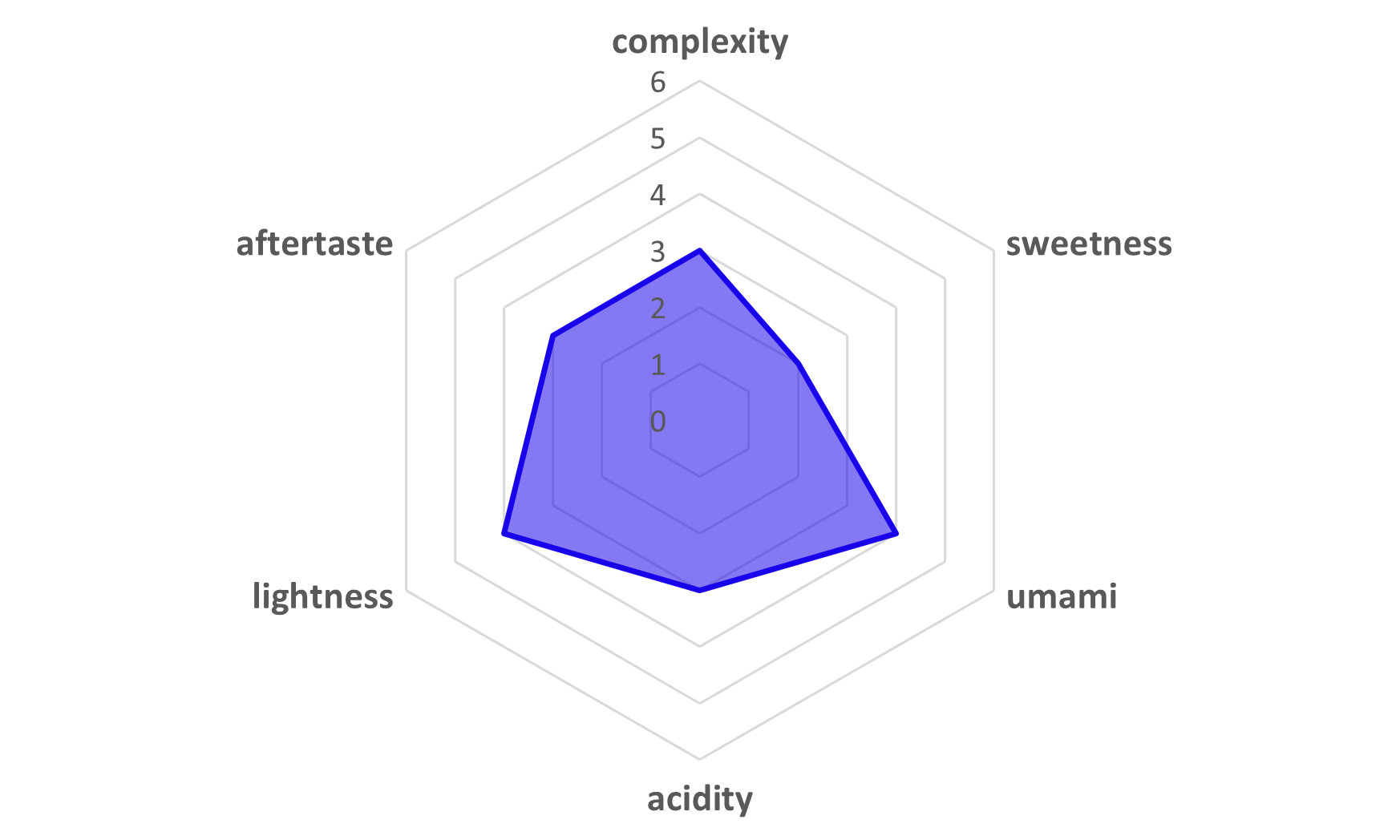N/A
An indicator of the sweetness or dryness of sake. Generally, a negative value indicates sweetness, while a positive value indicates dryness.
A numerical expression of the total amount of acidity. A high acid level indicates sharpness and richness, while a low indicates lightness and sweetness.
The ratio of rice remaining after scraping from the outside. By shaving off the surface layer, sake can be made with a distinctive aroma and free of impurities.
"The nose is reminiscent of Rieussec, a Bordeaux noble rot wine. There is a good amount of alcohol, similar to Aquavit, and the well-concentrated fruit and instant line of the aroma is fully enjoyable. The palate is rich, walnut-like, with a nutty astringency and a delicious flavour. This is a unique characteristic. The aftertaste is modest, but this sake can accompany many different categories of food. Enjoy chilled."
Professional French Chief & YUKARI Special Ambassador
"It exhibits a rich aroma of matured notes. The predominant scents include almond milk, cinnamon, and dark chocolate. There is a complex and profound complexity reminiscent of barrel aging, with nuances of brown sugar, hinoki cypress, oak, and cloves. These elements harmonize with the fragrances of shiitake mushroom broth, squid ink, smoked and pickled daikon, and earthy tones. The taste carries a luscious and velvety thickness derived from the aging process, yet it maintains a relatively light and elegant balance. The sake showcases remarkable maturity, and the finish is moderately long. It is recommended to serve this sake at a temperature range of 10°C to 20°C, using a Sherry glass for optimal enjoyment."
Sommelier of Sake / Sake Diploma & YUKARI Special Ambassador







